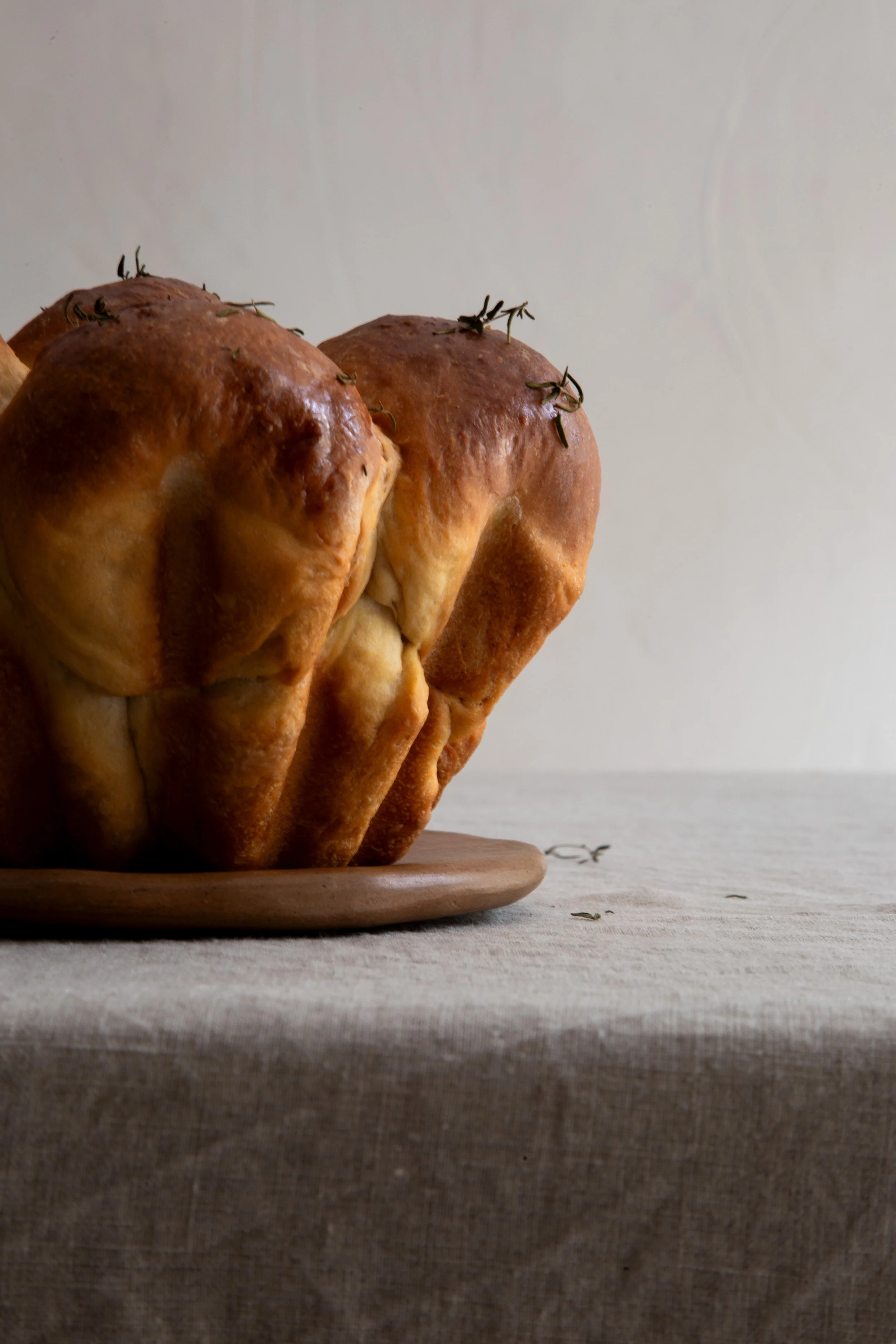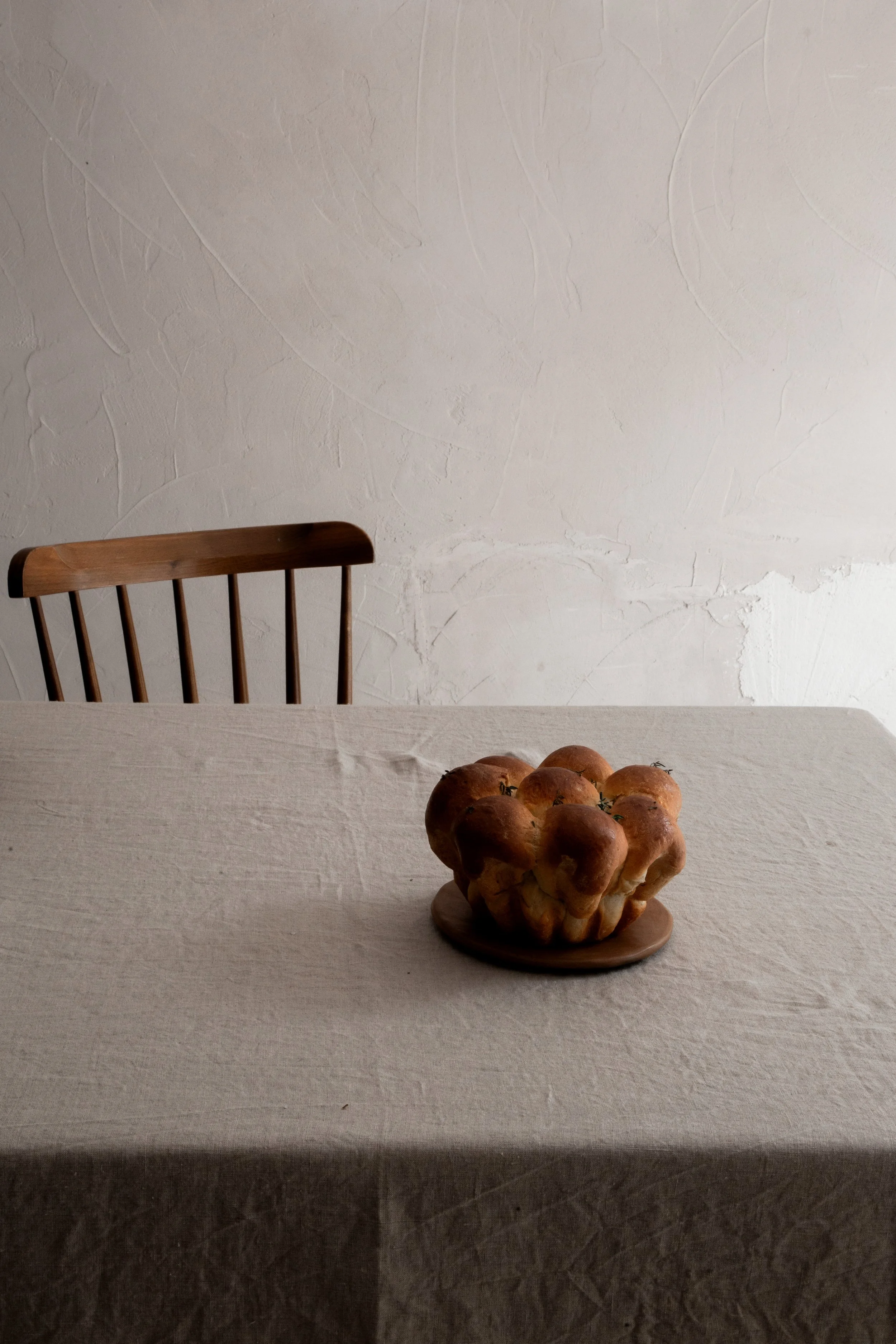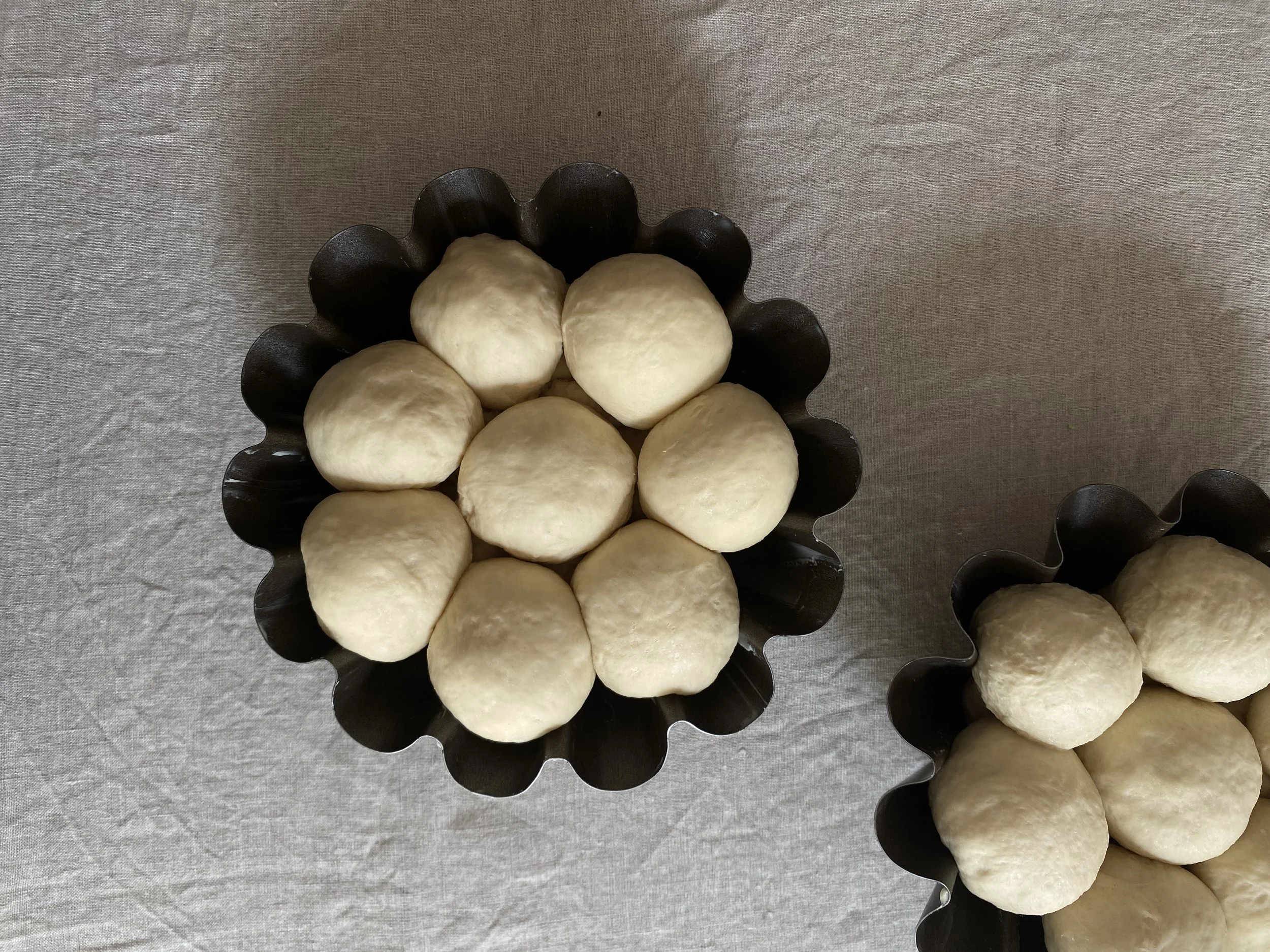BRIOCHE BREAD
A flavour like brioche bread but lighter in butter content. In between the classic brioche and a sourdough milk bread. Soft but dense in texture and flavour. Best combined with some good quality butter with fresh herbs, or some cold pressed extra virgin olive oil from the Mediterranean terroir with a pinch of sea salt from the islands’ rocky shores.
BRIOCHE BREAD
INGREDIENTS (makes 2 round breads of approximately 18 cm ⌀ )
540 g white bread flour
55 g granulated sugar
10 g dry baker’s yeast
360 g activated homegrown sourdough starter*
130 g plant-based mylk (oat mylk or rice mylk) + 2 tablespoons (to melt the salt)
70 g water
38 g good quality butter, at room temperature
12 g sea salt, finely ground
The egg white of one egg for brushing on top of the bread before baking
a few sprigs of fresh thyme
EQUIPMENT
A scale
A wooden spoon + a clean towel to cover the bread
A cooking pan
A bowl large enough to mix the dry ingredients and knead the bread
2 round brioche baking trays of 18 cm top diameter or any other round baking tray with a similar diameter size.
Plastic wrap + aluminium foil
A good working oven
A kitchen brush
PREPARATION
In a large bowl, combine the flour, sugar, dry yeast and mix well – using a wooden spoon or a whisk. Set aside.
In a pan, warm up lightly and over low fire the butter, the mylk and the water until the butter melts. Be careful to not overheat the solution. When the butter is melted, remove the pan from fire.
When the solution is not hotter than lukewarm, add the activated sourdough starter and mix well using a wooden spoon or a rubber spatula.
Slowly and gradually add the wet solution to the bowl with the flour - sugar - yeast and mix the ingredients with round movements.
Intensify the kneading and continue mixing the dough until all flour is hydrated and well incorporated in a sticky dough.
Knead the dough for 2 -3 minutes and then spread evenly the finely ground sea salt on the skin of the dough. Melt the salt with 2 tablespoons of mylk and continue to knead the dough until all the salt is well incorporated. Cover the bowl with a towel and let the dough rest for at least 30 minutes.
After that time, knead the dough for at least 5 minutes until her surface is smooth. If the skin of the dough starts breaking, let the dough rest for at least 15 minutes and then continue kneading again.
When the surface of the dough is smooth and strong, cover the dough with the towel and let it ferment and rise for at least 3 hours at room temperature (20-25°C) while regularly checking the progress of fermentation every hour and until it has doubled in size.
If the temperature in your room is lower that 20°C then cover the dough with a blanket and let it rest at a warmer spot close to a heater.
If the temperature in your room is higher than 25°C then let it ferment for less than 3 hours until it has doubled in size.
When the dough has doubled in size, deflate it by pushing down her body – using your palm. Knead the dough again for 2-3 minutes and divide the body of the dough in two equal parts. Roll the two pieces to create 2 even round balls. Cover them with some plastic wrap and let them rest for at least 30 minutes.
At this stage, you could either let the dough ferment overnight (approximately 8 – 10 hours) in the refrigerator so that the flavours blend and develop further with time.
Alternatively, you could just continue with the process without the overnight rest, by dividing the dough in equal portions of approximately 44-46 g per portion to create round balls of dough.
Arrange the small balls of dough into the baking tins that you have previously smeared with some butter and let them proof at a warm spot for at least 30 minutes. Brush the tops of the breads with some egg white and add the fresh sprigs of thyme.
Bake the breads in preheated oven at 190°C (conventional heating) for 30 minutes. After that time, cover the breads with a piece of aluminium foil to prevent further browning and continue baking them for another 20 minutes. Allow the brioche bread to cool slightly on a cooling rack before you consume it.
TIP 1: If you are opting to ferment the dough overnight, the next day take the dough out of the refrigerator and allow her a time of at least 30 - 40 minutes to temper to room temperature before you continue with the process of bread making.
TIP 2: Consume the brioche warm or toasted to enjoy the full flavours of her wild fermentation.
Love + success,
Alexandra
*Activated is the sourdough starter that we have previously ‘fed’ (=activated) at least 4 -6 hours before baking by adding equal parts of unbleached flour and water to the amount of sourdough starter. This is important to ensure that the microbiome in our starter is fully active and healthy to ferment our baking goods. If you want to grow your own sourdough starter you can start it from scratch or speed up the process of creating it by using the SOURDOUGH FLAKES.



